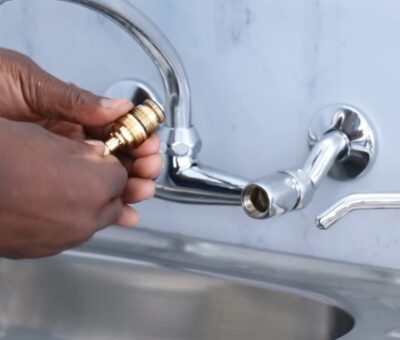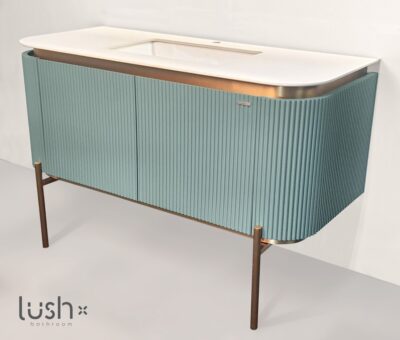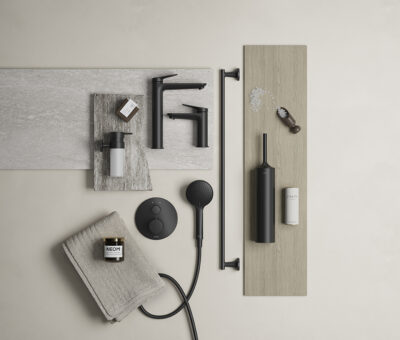Hansgrohe: A look at bathroom trends through the ages
Baths, brothels, the Bubonic plaque – the history of the lavatory wasn’t always so sanitary!
Next time you’re taking a luxurious hot shower beneath a state-of-the-art showerhead, take a moment to thank your lucky stars you weren’t born in 16th century Europe, when bathing was banned and nobles carried around nosegays (a small posy) to stop the pervasive stench. David Cooper, Managing Director of Hansgrohe South Africa says, “The history of the humble bathroom is closely intertwined with the evolution of humanity. The global Hansgrohe Group has been responsible for numerous sanitation innovations since its inception in 1901 – from the first affordable hand shower in 1928, to the more recent water-saving EcoSmart showers. We delved into the history of our favourite room in the house, because we’re proud of our small part in its story.” Starting with modern times, let’s take a closer look back into time:
The 21st century: If you are a trendy millennial, your bathroom is probably sleek, chic, and gadget-filled. Organic shapes are in – from tap to bottom, natural forms are a big trend. The Hansgrohe Group is all about innovation:
- Philippe Starck’s Axor Starck Organic bathroom collection (2014) remains on trend today.
- EcoSmart Mixers and showers came in 2007, reducing water consumption by up to 60%.
- Airpower fusing air with water creates softer shower droplets (2005).
- Trendy Raindance showers arrived (2003).
- Hansgrohe’s concealed iBox universal installation was introduced to control thermostat (2000).
The 20th century: If you were an aspirational housewife, you’d have stars in your eyes with a glamorous Hollywood-inspired bathroom. Hansgrohe sales soar:
- In 1989, pre-installed Hansgrohe shower systems became all the rage.
- 1968 saw the introduction of the world’s first shower with adjustable jet types – with over 30 million sales!
- The ‘green’ Mistral Eco hand shower was introduced in the 80’s, reducing water consumption by 50%.
18th-19th centuries: Victorian, Industrial and Georgian eras If you were a Victorian, for the first time in history, your bathroom would have an indoor bath. If you were born in the Industrial revolution, you’d have had a flush toilet, and if you were a wealthy Georgian Londoner your bedroom would’ve been where you conducted most of your personal hygiene routine. Hansgrohe makes its mark:
- In 1928, Hansgrohe made showering an option for many people for the first time, with its invention of the hand shower with the porcelain handle.
The Middle Ages: If you lived in Europe, you wouldn’t have had a bathroom, but you might have had a garderobe – a small closet occupied by a bench with a hole – aka, an early toilet, that sent waste straight down to the ground or moat below. You would also have enjoyed a good stew – communal bathing for men and women, followed by dining and grooming. That is, until the 16th century when unfortunate affiliations between baths and brothels made bathing sinful and it became an unpopular pursuit. When the Bubonic Plague hit in 1347, baths also became synonymous with disease so fell further out of favour – King Henry V111 banned them in 1546. Ancient civilisations: As an Ancient Roman, you wouldn’t have had a bathroom per say, but (providing you were affluent) you’d be a regular reveller in the famed public baths – a ritualistic social gathering for the veritable who’s who of society. Not always such a pretty picture, the bathroom has transformed to a space of privacy and peace, where one can ponder the meaning of life in comfort. Today, the lavatory is all about exquisite eco-conscious design and constant innovation – the motivational bastions behind Hansgrohe’s success for the last 116 years.
For more visit www.hansgrohe.com
You might also like...
-
Cobra: Tap Maintenance Made Easy

Discover practical and cost-effective solutions for maintaining your family’s bathroom fixtures with our guide on affordable tap maintenance. Invest in the well-being of your home ...
-
Italtile: Home Renovation

When it comes to home renos and upgrades, all homeowners want the most bang for their buck. But how to achieve this? Which finishes are ...
-
Your Sanctuary with Mosaico Vero’s Lush Bathroom Vanities – A Symphony of Luscious Minimalism

Extraordinary designs made with the highest level of quality, the latest collection, the Lush Bathroom range by Mosaico Vero, is a celebration of mindful minimalism ...
-
Duravit: Your Personal Feel-Good Bathroom Has Never Been Easier

Stylish accents and colour-coordinated designs complete bathrooms. Discover this harmonious colour concept from Duravit. The finishing touches to the bathroom design are the small details ...




























